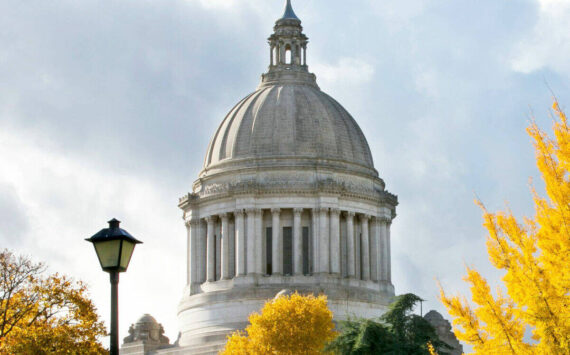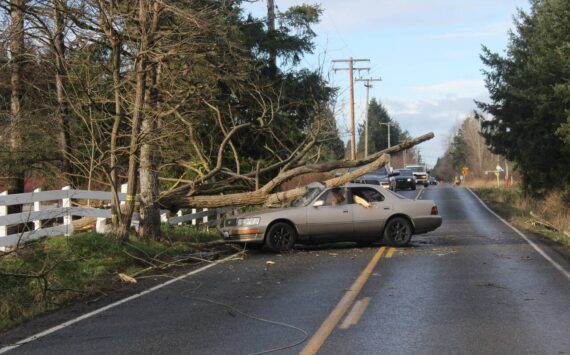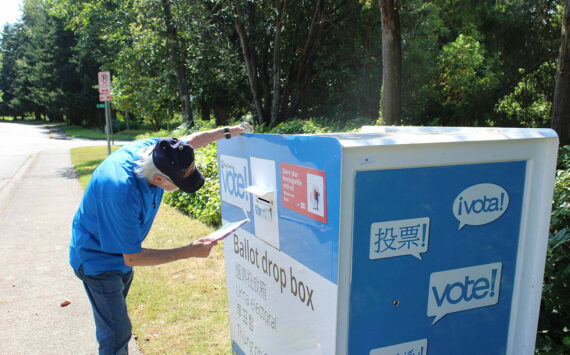In commemoration of the historic journey of Meriwether Lewis and William Clark two centuries ago, the Tacoma Art Museum presents Lewis & Clark Territory: Contemporary Artists Revisit Place, Race and Memory.
Beginning today, museum visitors can examine their travels – President Thomas Jefferson dispatched Lewis and Clark in 1804 to find a water route across North America and explore the uncharted West – through the lens of art. Lewis & Clark Territory draws from three overarching themes of the Lewis and Clark journals place, race, and memory to explore conditions of the American West today.
The exhibition, which runs through June 6, includes a diverse array of artistic work – paintings, photographs, video work and small-scale installations – meant to investigate contemporary issues in the West. Lewis & Clark Territory includes 78 works by 30 artists, and is located in the museums Annette B. Weyerhaeuser gallery.
Were really proud of this display at the Tacoma Art Museum, said chief curator Patricia McDonnell, calling the exhibition a golden opportunity to do some metaphorical exploration.
We wanted to bring the perspective of art, she said. We wanted to look at the resonance of exploration on today.
Associate curator Rock Hushka agreed: Lewis & Clark Territory uses the extensive journals of the Lewis and Clark expedition as a touchstone for understanding the nuances and complexities of life in the American West.
Its an amazing story, he said of the information contained in the journals of the famed explorers.
Questions about landscape, race and tradition are still being dealt with today, he noted. We still struggle with them.
That struggle, for example, can be seen in the 1996 painting Indian Country Today by artist and Native American activist Quick-to-See Smith. The work is a map of the United States, with sketchy boundaries and imprecise areas of color. Newspaper texts relating to Native Americans – both positive and negative in tone – are located under the boundary lines.
Its not a screed, explained Hushka. Its complex and inter-connected.
Some of the other works of art on display as part of the exhibition include:
– paintings detailing the landscape of the West, such as Imagined West (2003) by Victoria Adams and Mt. Moran and Thor Peak (1994) by Ken Moylan;
– black and white photographs of geological formations in Oregon by Terry Toedtemeir, evoking 19th-century landscape imagery;
– Ten Most Popular Places to Dump a Body in the Columbia River Gorge (1998), a series of black and white photographs that juxtaposes the natural beauty of the Pacific Northwest with the knowledge that these are sites where dead bodies were found;
– Filmmaker and artist Bentley Spangs examination of how mainstream American culture represents Native Americans in his short video work;
– Lakota Special Boy Shirt (2002), a childs protective shirt made of buckskin, beads, wool, cotton and thread, by Thomas Haukaas; and
– Orca (2002), a tall glass sculpture by distinguished carver Marvin Oliver.
These are but a few of the thought-provoking works of art that make up Lewis & Clark Territory.
The Tacoma Art Museum is open Tuesday through Saturday, from 10a.m. to 5pm; Thursday, from 10a.m. to 8 p.m.; and Sunday, from noon to 5p.m. The museum is closed Monday.
Admission is $6.50 for adults; $5.50 for seniors (65+) and students; and free for children 5 and under. Admission is free every third Thursday of the month.
For more information, contact the museum at 253/272-4258, or visit their Website at: www.TacomaArtMuseum.org.
The neighboring Washington State History Museum will be exhibiting Beyond Lewis and Clark: The Army Explores the West from Feb. 14 through Oct. 31. This national exhibition includes Lewis air rifle, original field notes and maps drafted by Clark. Tacoma Art Museum members can enjoy free admission to the Washington State History Museum during Lewis & Clark Territory. For more information, visit the Washington State History Museums Website at: www.wshs.org.




